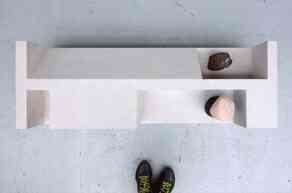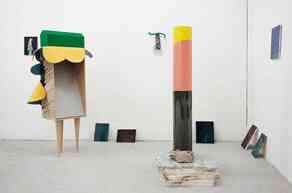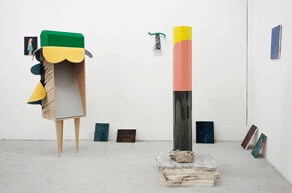Giuliana Zefferi
Giuliana Zefferi is an Astérides Resident in 2013. The archives of Triangle-Astérides do not allow for the determination of the exact dates or the duration of this residency in 2013.
Giuliana Zefferi was born in 1985 in France, she lives and works in France.
The work is an intermediary zone, a space of all possibilities that I attempt to maintain within the exhibition space. Forgotten, unfinished, failed, and aesthetically unstable works stick together like a compression of temporality and experimentation. Together, these vulnerable works allow us to perceive the impact of ideas in the making. In a text published in 2007, Brian O’Doherty describes the temporality of the studio: “The time of the studio is a shifting beam of temporality: quotas of the past incorporated into completed works, abandoned or awaiting resurrection, the feverish present of works, at least one work in progress, a present through which James Joyce wrote ‘the future perishes in the past’ while exerting on the present the pressure of ideas yet to be born.”*
My work consists of masses, sculptural modules that suggest a movement in the making, a reversal or an overturn. I am interested in the moment when the plot shifts, and for a second, the viewer is offered a thousand possibilities. The forms I create are shaped in a double movement of destruction of obstacles and construction of artifacts. They attempt to resist, questioning their very position, their value as sculpture, each episode is built on a pattern with multiple entrances and exits. In a book published in 2009, Laurent Jeanpierre discusses the work of the experimental artist: “…The experimental artist is certainly not the genius of the romantics, nor the engineer of multidisciplinary avant-gardes. His inspiration comes only from practice, but his reason is not instrumental. He has freed himself from the fantasy of mastery that creation sometimes induces. He is neither obsessed with the new, nor fixated on his methods.”**
The inherent idea in my work is that anything can be made or undone, with the aim of keeping the work in reality, desacralizing it. Evence Verdier writes about the work of Tobias Putrih: “…Deconstruction does not mean the eradication of an architectural structure, but its decomposition with a view toward a new arrangement of signs and images.” To situate the work in reality is not to erase these constructions and deconstructions; it is to show the work, to present a piece in its duration, its memory. Thus, the works created and, by extension, the exhibition could speak and chant: “Reality is not all of reality, what has been produced here can be made or undone!”**
Giuliana Zefferi, 2011
*Studio and Cube: On the Relationship Between Where Art Is Made and Where Art Is Displayed by Brian O’Doherty, Princeton Architectural Press, 2008.
**Introduction to the Conditions of Experimental Art, Laurent Jeanpierre. In Actu de l’expérimental dans l’art, Les Presses du Réel, 2009.
Giuliana Zefferi’s work in on display during the exhibition Après avoir tout oublié [After having forgotten everything], 2015.



